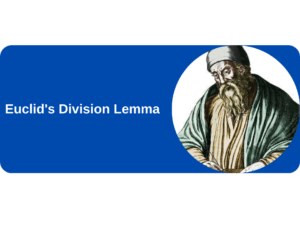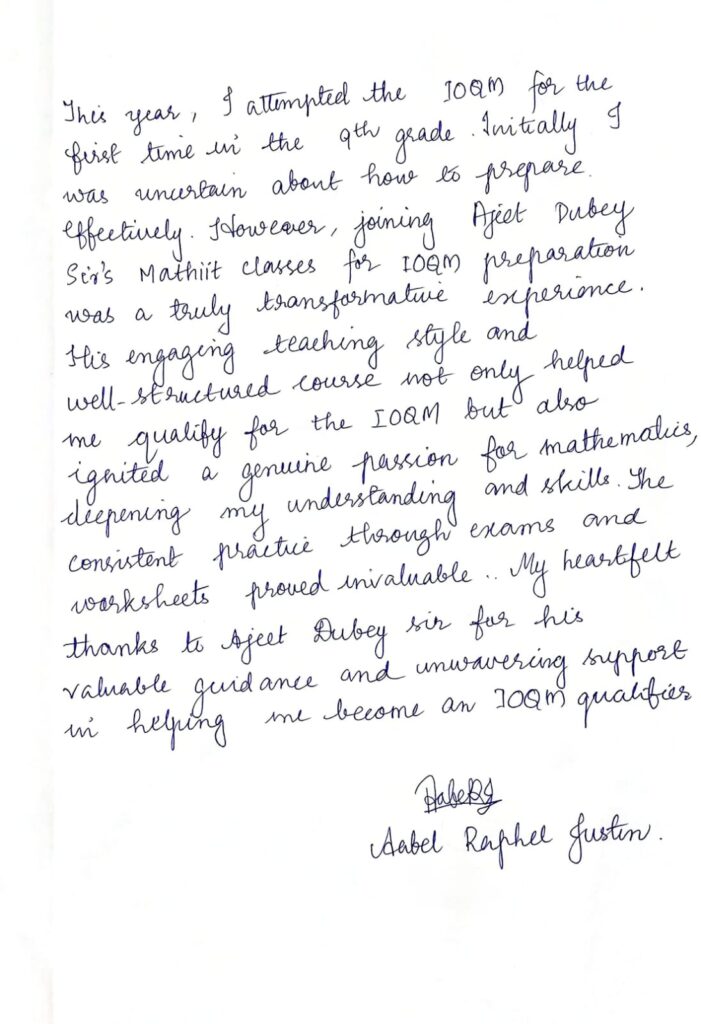Euclid's Division Lemma

Statement of Euclid’s Division Lemma: Given two positive integers ‘a’ and ‘b’ (where ‘a’ is greater than ‘b’), there exist unique integers ‘q’ (quotient) and ‘r’ (remainder) such that:
a = bq + r
where:
- ‘a’ is the dividend,
- ‘b’ is the divisor (positive integer),
- ‘q’ is the quotient (an integer),
- ‘r’ is the remainder (an integer), and
- ‘0 ≤ r < b’ (the remainder ‘r’ is greater than or equal to 0 and less than ‘b’).
Explanation:
Start with two positive integers ‘a’ and ‘b,’ where ‘a’ is greater than ‘b.’
We want to find a quotient ‘q’ and a remainder ‘r’ such that when ‘a’ is divided by ‘b,’ it can be expressed as ‘bq + r.’
Now, perform the division ‘a ÷ b’ to find ‘q’ and ‘r.’ The quotient ‘q’ is the largest integer such that ‘bq’ does not exceed ‘a,’ and ‘r’ is the positive integer remaining after subtracting ‘bq’ from ‘a.’
Example: Let’s say a = 17 and b = 5.
- We find q = 3 because 5 * 3 = 15, which is the largest multiple of 5 that is less than or equal to 17.
- The remainder r = 17 – 15 = 2.
Ensure that the remainder ‘r’ is greater than or equal to 0 and less than ‘b.’ This guarantees that ‘r’ is a non-negative integer smaller than the divisor ‘b.’
The division lemma asserts that you can always find such ‘q’ and ‘r,’ and they are unique for the given values of ‘a’ and ‘b.’
Euclid’s Division Lemma is the basis for several important concepts in number theory, including the Euclidean algorithm for finding the GCD of two numbers and understanding properties of prime numbers. It’s a fundamental tool for working with integers in mathematics.
More Examples:
Example 1: Divide 50 by 7 using Euclid’s Division Lemma.
- Dividend (a) = 50
- Divisor (b) = 7
Using the lemma, we find:
- Quotient (q) = 7
- Remainder (r) = 1
So, 50 can be expressed as 7 times 7 plus a remainder of 1: 50 = 7 * 7 + 1.
Example 2: Divide 100 by 9.
- Dividend (a) = 100
- Divisor (b) = 9
Using the lemma:
- Quotient (q) = 11
- Remainder (r) = 1
Thus, 100 = 9 * 11 + 1.
Example 3: Divide 27 by 4.
- Dividend (a) = 27
- Divisor (b) = 4
Using the lemma:
- Quotient (q) = 6
- Remainder (r) = 3
So, 27 = 4 * 6 + 3.
Applications:
Greatest Common Divisor (GCD): Euclid’s Division Lemma is the foundation for the Euclidean algorithm, which is used to find the greatest common divisor (GCD) of two numbers. The GCD is essential in simplifying fractions, solving modular equations, and other mathematical operations.
Modular Arithmetic: Modular arithmetic is widely used in computer science and cryptography. Euclid’s Division Lemma helps in finding modular inverses and solving modular equations. For instance, it’s used in RSA encryption, a widely used encryption method.
Prime Numbers: Euclid’s Division Lemma is used to prove that there are infinitely many prime numbers. The famous proof by contradiction, known as Euclid’s proof, relies on the idea that if you have a finite list of primes, you can construct a number that’s not divisible by any of them.
Number Theory: This lemma is fundamental in various number theory problems, such as exploring properties of integers, divisibility rules, and understanding the behavior of numbers under different mathematical operations.
Polynomial Division: In algebra, polynomial division is akin to Euclid’s Division Lemma. Just as you divide integers using this lemma, you divide polynomials to find quotients and remainders.
Coding Theory: In computer science and information theory, Euclid’s Division Lemma plays a role in error detection and correction codes like the Reed-Solomon code.
Euclid’s Division Lemma is a versatile tool with applications in a wide range of mathematical and computational fields. It forms the basis for understanding how numbers can be broken down into smaller parts, and this understanding is crucial in solving various mathematical problems and real-world applications.






